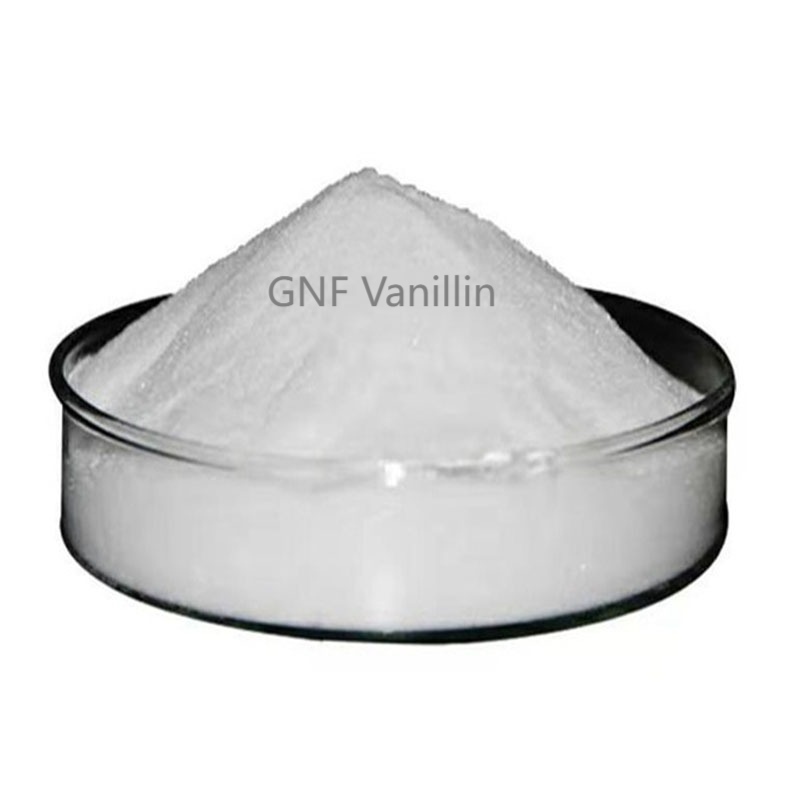-
Make a Call : +86 551 63500087
-
Get A Estimate : sales@gnfchem.com
What Are You Looking For?
What Are You Looking For?
Make a Call : +86 551 63500087
Get A Estimate : sales@gnfchem.com

Does the vanillin in food produce harmful substances after metabolism?
Oct 09, 2025Under normal and compliant intake conditions, after the metabolism of vanillin in food, the main products are harmless and do not produce harmful substances with clear health risks. The metabolic process follows the conventional processing path of small molecule aromatic compounds by the human body, and the final products are mostly excreted through urine, with a very low burden on healthy individuals.
1. Core metabolic pathway of vanillin (harmless orientation)
The metabolism of vanillin in the human body mainly occurs in the liver. The key steps and products are non-toxic. The specific process is as follows:
Step 1: The aldehyde group (-CHO) in the vanillin molecule is oxidized by "aldehyde dehydrogenase" in the liver to carboxyl group (-COOH), generating vanillic acid. This is the main intermediate product of vanillin metabolism, which is non-toxic and widely present in natural plants (such as vanilla beans, coffee beans, nuts), and the human body has a mature subsequent processing ability.
Step 2: Further metabolism to the non-toxic final product vanillic acid will continue to undergo "demethylation" or "binding reactions", generating more easily excreted harmless substances:
Some vanillic acid will lose the methoxy group (-OCH3) and convert to protocatechuic acid (a naturally occurring phenolic acid substance) - this is distributed in vegetables and fruits, and is non-toxic;
Most vanillic acid (or protocatechuic acid) will combine with "glucuronic acid" or "sulfuric acid" in the body to form "bound metabolites" (such as vanillic acid glucuronide). These bound substances are more polar and can be easily excreted through urine by the kidneys, without accumulating in the body.
2. Special cases: Potential risks of excessive intake (not "metabolic toxin production", but "overload burden")
It should be noted that if the intake of vanillin far exceeds the daily allowable intake (ADI value: 0-10mg/kg body weight), it is not that metabolism will produce "harmful substances", but may cause indirect discomfort due to "metabolic overload burden". The specific manifestations are:
Increased liver metabolic pressure: Excessive vanillin will occupy more liver enzyme systems (such as aldehyde dehydrogenase), and may temporarily reduce liver metabolic efficiency in the short term, but this is not "metabolic products are toxic", but "metabolic capacity cannot keep up with the intake speed";
Increased renal excretion burden: A large amount of bound metabolites need to be excreted through the kidneys, which may temporarily increase renal filtration pressure, but for those with normal renal function, this burden is reversible and will not cause permanent damage.
Only in "extreme overconsumption" (such as far exceeding the ADI value by tens or even hundreds of times, which is almost impossible to occur in daily diet) experimental conditions, can trace "active oxygen" and other stress substances be observed during the metabolic process, but this is a non-specific reaction after "dose exceeding the safety threshold", rather than a regular product of vanillin metabolism.
3. Supplementary explanations for special populations (still based on "harmless metabolism")
Even for the "special attention on intake amount" populations mentioned earlier (such as infants, those with impaired liver and kidney function), the core risk is not "metabolic toxin production", but:
Infants: Their liver and kidney functions are not yet mature, with lower metabolic enzyme activity, excessive vanillin may cause a slower metabolic speed, resulting in "temporary accumulation of metabolic products", causing mild digestive disorders (such as abdominal distension), but not metabolic production of harmful substances;
Those with impaired liver and kidney function: Their metabolic / excretion ability is decreased, excessive intake may prolong the retention time of metabolic products in the body, increasing organ burden, but the metabolic products themselves are still non-toxic.
Summary: "Metabolism harmless" under normal intake, no need to worry excessively The vanillin present in food is within the compliant intake range. Its metabolic process is "safe and controllable", and the final products are all harmless substances, which will not pose any toxic risks to healthy individuals. The so-called "risk" merely stems from "the metabolic burden caused by excessive intake", rather than "the production of harmful substances during metabolism". Therefore, as long as food purchased through legal channels complies with national standards, there is no need to worry about the safety of the vanillin after metabolism.

Hi! Click one of our members below to chat on